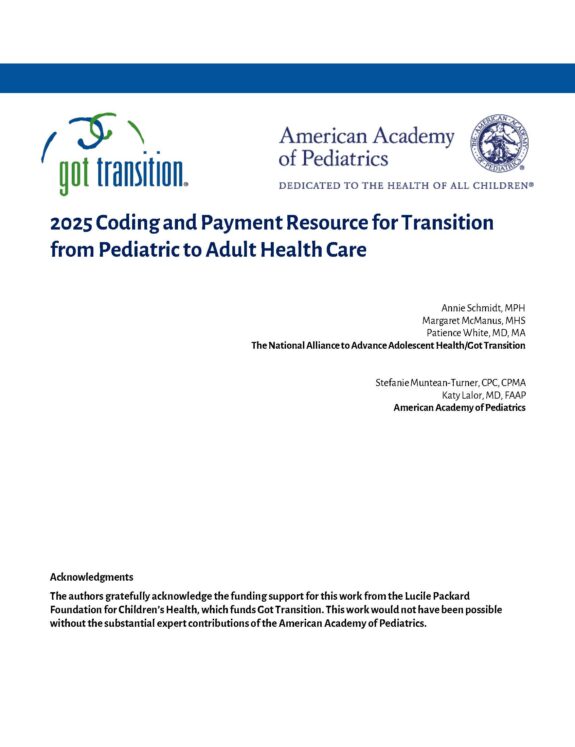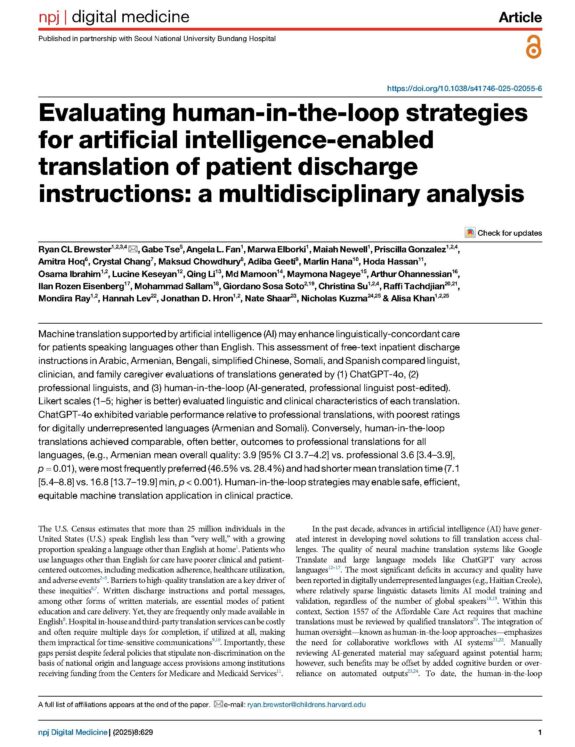Redesigning CCS: Improving the Bath Water to Save the Baby
The future of California’s public system of health care for children with chronic health problems, currently the shared responsibility of California Children’s Services (CCS) program and Medi-Cal, is once again the subject of discussion and debate among public officials and various stakeholders. There is much to be admired in the current program, but health care in the US is changing and with changes come heightened expectations of what a health care system should provide, how it should operate, and what it should achieve. These are challenges that a redesign of the CCS program and its complementary partner, Medi-Cal, must address.
Many competing priorities are under consideration, but paramount among them should be that the system meets the needs of the children and families who depend upon it, while at the same time achieving three aims of better quality care, better health status for children with chronic and complex problems, and smarter spending by the State and counties to maximize the effect of limited resources.
Most States provide high quality care for their low-income children with special health care needs (CSHCN) through a partnership between their Medicaid and their Title V/CSHCN programs. In general, Medicaid pays for clinical services and Title V/CSHCN attends to the infrastructure and population health services that address common needs that are not specific to the medical condition of the child. But things are different in California.
Nearly all of the State’s funds, both Medicaid and the Title V/CSHCN program (known as California Children’s Services or CCS), are used to pay for clinical services. Consequently, support for infrastructure and population health services has been minimal, which has resulted in a weak infrastructure and inadequate attention to the complete physical, mental and social well-being of these children and the quality of care they receive.
California needs to improve and integrate the care systems upon which children with special health care needs and their families depend. This can be accomplished, in part, by strengthening the administrative capacity of the Title V/CSHCN program so that it is able to address infrastructure supports and the population health services that contribute to achieving optimal health for CSHCN.
What little infrastructure support that exists has effectively supported regionalized access to pediatric subspecialty services, a hallmark of the CCS program. However, the toll taken by the relative lack of infrastructure support is most apparent and troubling in the system’s weaknesses in providing other key elements of a high performance system, namely whole-child care, family-centered medical homes, care coordination and quality assurance.
Recommendations for System Specifications, Policies and Processes
Eligibility and Service Planning
Funds for infrastructure support would be available if eligibility for CCS were modified and consequent cost savings were applied to system improvements. Eligibility for services not frequently used by typically healthy and developing children should be based on the chronicity, severity and complexity of the child’s health care needs rather than on his or her diagnosis. Eligibility determination generally should be based on outpatient health status rather than on the need for acute hospital services. Eligibility and initial service planning should be linked but separate processes. All children referred for CCS eligibility determination should be screened using the National Survey of Child Health Chronic Condition Screener or a similar, standardized, non-diagnosis-based process. Eligibility, and ultimately provision of services, should be guided by an assessment of the child’s health care needs and by the capacity of his or her family/caregiver to access, obtain and benefit from necessary services. Children who are determined eligible must then receive a structured, standardized comprehensive health and family risk assessment upon which to develop an initial individualized, shared care plan, initial referrals1 and guarantee of a medical home. For children deemed eligible for Regional Center services this assessment should be carried out jointly or collaboratively by the local Regional Center, CCS and Medical Therapy Unit with input from the child’s primary care physician. Assessments can be provided at a variety of places convenient for the family and certified by the State’s Title V/CSHCN program, including academic medical centers, Title V clinics, Medical Therapy Units and primary care offices. Participation in assessment should be used to create a statewide registry of CSHCN.
Medical Homes and Whole-Child Care
All children, especially CSHCN, should have a medical home that meets criteria established by the American Academy of Pediatrics. The Title V/CSHCN program should have responsibility for adopting or developing standards for medical homes for children with complex conditions, and Medi-Cal should be responsible for developing standards for medical homes for other children served by the public health system. Medical homes are responsible for assuring whole-child care, including a clinician who provides first contact and continuous, comprehensive care; coordinates care upon which children and families depend; and incorporates a collaborative, team-based practice model. The family should be instrumental in selecting the medical home. Based on the assessment and care plan, and taking into account families’ preferences, children with moderate or severe chronic conditions should have ready access to pediatric subspecialty care for their chronic illness, preferably within special care centers certified by the Title V/CSHCN program. Special care centers may serve as medical homes provided they are able to provide or assure access to the medical home services described above. Children with health complexity or who are “superutilizers” or are SSI eligible deserve special attention within a system of care for CSHCN. The nature of their health problems often requires comprehensive, coordinated care that may not be available in a primary care or specialty care practice. Their needs may be best met when their ongoing care is received in a higher level medical home or complex care clinic that is certified by the State as a special care center because of its team-based care and expertise in the management of children with medical complexity. Medical homes of all types must engage in self-assessment of their capacity and in continuous quality improvement activities. Reimbursement rates for medical homes should exceed those typically provided for primary care and may include an annual medical home capitation bonus. Additional incentives should be provided to medical homes that provide integrated medical and behavioral health care services and thus meet the criteria for health homes and are eligible for federal funding.
Care Coordination
The greatest service need of families with CSHCN that most practices, primary or subspecialty, are unable to meet is care coordination. Standardized assessment and initial care planning should result in tiering of the CSHCN population into those whose care coordination needs involve (1) assistance with referral and follow-up, (2) care management and occasional help with navigation and care coordination, and (3) intensive care coordination within the health care system and with other services, including family support, educational, developmental and mental health services. A child’s health status and care plans should be reviewed annually. At a minimum, individual practices and clinics should have designated staff to assist with referral and follow-up. Special care centers and some practices, in collaboration with health plans where applicable, should provide the second level of care coordination. When this service is provided by staff not employed by the practice, standards for communicating with the medical home must be established. The most comprehensive care coordination needs should be provided by an experienced, skilled community-based care coordinator employed by the Title V/CSHCN agencies or a Regional Center. Caseloads must be manageable and adhere to recommended levels. Some settings serving high-need families and children with medical complexity also should provide this third level of care coordination services. This level of care coordination also requires adherence to standards for communicating with the medical home. All levels of care coordination services should be reimbursed at rates commensurate with their intensity. Some community- or regional-level care coordination services shared across practices or plans might be staffed by publicly funded care coordinators. The development and annual reassessment of individual care plans should be a covered benefit as a care coordination function. To the greatest extent possible all services upon which children depend should be coordinated if not integrated. Behavioral health care, developmental services, home care and palliative care services are examples of such services. In California, developmental, mental health and special education services
Quality Assurance
State Title V/CSHCN agencies should have responsibility for certifying special care centers based on structural and staffing characteristics, access, volume and outcome measures. Medi-Cal should have quality assurance responsibility for community primary care practices, some of which it may delegate to health plans. Technical assistance to improve practice performance and quality improvement should be provided and assured through a memorandum of understanding between Medi-Cal, Title V, Department of Developmental Services (DDS) and other contracted entities as appropriate. The State should consider creating or contracting with one or more entities with experience working with practices to improve quality.2 Reimbursement should be tied to performance and the demonstration of high quality care. Data on quality, including but not limited to HEDIS measures and evaluation of patient experience (e.g., CAHPS, PICS), should be regularly collected, analyzed and publicly reported along with CCS and linked Medi-Cal utilization and cost data where available. The State Medi-Cal program should regularly, e.g., quarterly, convene representatives of the health plans, professional child health care associations, and families to review issues of access and of quality assurance activities, including quality assessment, monitoring, and improvement requirements. Families should be compensated for their contributions, and the costs of their participation also should be reimbursed. State Medi-Cal should employ a centrally or regionally located ombudsperson available to patients, families and providers to solve issues related to access and quality of care.
Family-Centered Care
Central to care systems for CSHCN is that they are family-centered at multiple levels of operation. Linguistic competency (e.g., access to translation services) and cultural sensitivity (employment or engagement of people from the communities being served) are characteristics that should be present and demonstrable by providers serving CSHCN. Practices serving CSHCN should regularly assess the experiences of the families they serve and, ideally, should convene family advisory groups to help gauge and improve the quality of their care. California’s 11 child-serving hospitals serving Title V/CSHCN patients should involve parent advisors in policy and programmatic decision-making related to inpatient and ambulatory care. Providers serving CSHCN should be aware of the various community services available in their communities, and hospitals and agencies serving these children should have formal relationships with local family support service providers. The State should provide funding in addition to that allocated by the federal Title V program for local or regional parent-to-parent support services for families having difficulty adapting to and managing their children’s special service needs. The experiences of Medi-Cal families with their health plan and health care providers should be evaluated at least annually and the results should be publicly available. Much of the success of care of children with chronic and complex health problems depends on the actions of informed, trained and supported family members. The adoption of a variety of support services and technology—telehealth, home health care, interoperable electronic health records, asynchronous communication/email or texting, team care, co-location, coordinated appointments and group care visits—can be of great value to families caring for CSHCN. These facilitate access to care and support self-management, thus increasing the appropriateness of health care utilization and reducing family stress. These supports are important and necessary aspects of care coordination and should be compensated services or incented through capitated payment for care coordination or within a pay-for-performance framework.
Population Health
Medi-Cal and the State’s Title V/CSHCN agencies should be held jointly responsible for improving the overall health of the enrolled population, including active promotion of health and well-being. Recommended components of population health services that should be in place include: (1) the use of registries of CSHCN by the State, health plans and medical homes to monitor utilization and assure the receipt of preventive health care services; (2) standard protocols and prompts for preventive care and annual assessments of receipt of preventive services; (3) patient experience surveys; (4) screening for social factors affecting health and receipt of health care, as part of annual patient assessments; and (5) collaboration among State and county agencies providing health-related services to children with special needs, and among community agencies whose services can benefit CSHCN, such as child care, special education and family support.
Implementing Change
Modifying the current system by implementing the above suggestions should be a staged process designed to minimize the disruption of care. Staged implementation should be by county or region. A special committee, including family representatives and child health care providers in addition to State and county staff, should be formed and meet regularly to monitor the change process. Some of the funds necessary to support these system improvements can be obtained by improving system efficiencies, though investment of new dollars may be necessary at the outset in order to gain these efficiencies and improvements in quality.
1. This is done in Florida. Their Child Assessment and Plan is a web-based application.
2. National Improvement Partnership Network offers guidance on establishing local entities.



